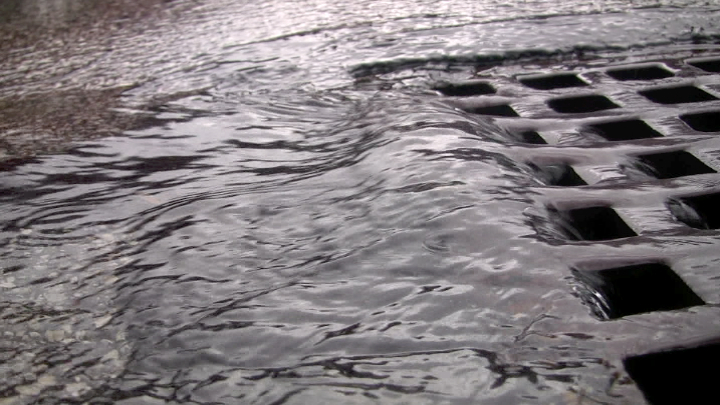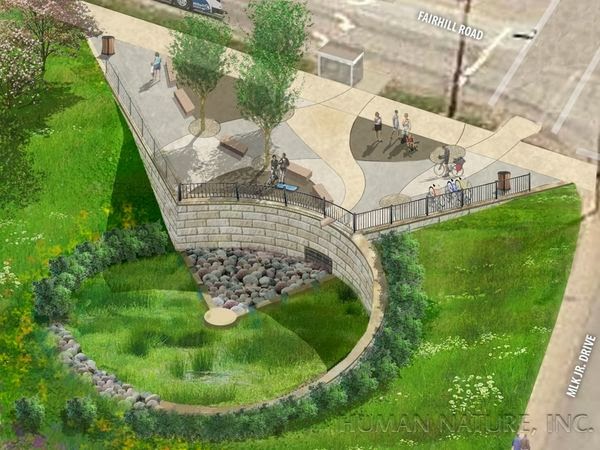
NEWS: “Is there a cheaper, greener way?” Let’s take a look. #neorsdGREEN
Posted by Jared Shepherd
- 4410 Views
- February 19th, 2014
- in Miscellaneous
- No Comments
A story posted today on cleveland.com asks the question, “Is there a cheaper, greener way” to prevent billions of gallons of sewage and stormwater from polluting Lake Erie?
It’s the first in a series of articles set to look at the financial, green, and comparative aspects of our 25-year program known as Project Clean Lake
The article raises good questions and we hope continues to further productive conversation about our water resources and how they must be protected responsibly. But there four quotes from the story that could benefit from more perspective.
1. QUOTE: “The Sewer District, which is under a federal consent decree to solve its combined sewer overflow problem, largely with tunnels, did not consider those green options from the start, in part, because district officials say little was known at the time about whether green technologies could tackle such a big environmental threat.”
REALITY: In our late-1990s planning, we considered many options, including sewer separation, and source control—reducing the amount of stormwater entering the combined sewer system—things we’d define as green infrastructure today.
Sewer separation was deemed too costly: Besides a higher price tag, that decision would have also required the tearing-up of hundreds of miles of street across Cleveland, affecting every homeowner across the combined sewer service area and extending our implementation schedule significantly.
And as we have discussed throughout our regional stormwater management program implementation efforts, separate storm sewers flow directly to the environment without treatment, carrying pollution and debris with every drop without treatment. That affects water quality, too.
The resulting plan was a combination of gray and green investments that met our targets and had potential to become even greener: That’s why our agreement was touted by the U.S. Environmental Protection Agency, because the research we are conducting as part of our green plans between now and 2019 will serve as model statistics so other communities can benefit from lessons we are learning.
We leave the door wide open for adding Green Infrastructure at any point during our program implementation over the next 25 years. That fact is outlined in Appendix 4 of the agreement.
2. QUOTE: “Yet other U.S. cities facing similar problems with managing sewer overflow are taking a greener route that they say is dramatically cheaper…”
REALITY: “Which is cheaper?” is a question that can be asked on a case-by-case basis. Sometimes, green might be cheaper, other times gray might be cheaper. But the question shouldn’t be, “Which solution is cheaper?” It should be, “Which solution is best based on the available information?” As an industry, we don’t fully understand the life-cycle operation and maintenance costs on Green Infrastructure very well since there has not been enough run-time with it.
Second, the first evaluation in any Green Infrastructure project within a CSO area is “sewer separation,” which we know from our previous Facilities Planning efforts (and our Appendix 3 projects) can be more costly when considering a large combined sewer area. Our large Green Infrastructure projects being undertaken as part of Appendix 3 are going to go a long way in helping us, and other communities, better understand the life-cycle costs of Green Infrastructure.
3. QUOTE: “They were dismissive, and they wanted to push this through at any cost,” [Mayor Gary] Starr said. “Meanwhile, all these other cities were canceling their combined sewer overflow programs. If we had more time and more public debate, we could have come to a different conclusion…”
REALITY: Mayor Starr, a trustee since 1994 whose term ends this month, has been on the Board even before negotiations began, and our goal has always been to meet our obligations, protect the environment, and minimize the financial impact on our customers.
Our 2010 agreement was groundbreaking in that we formally identified green infrastructure as a means of reducing combined sewer overflow volume, something that had not been done before in a consent decree.
4. QUOTE: “Leaders in those cities acknowledged that they face some daunting challenges with their green approaches. But they also envision significant savings for their residents: $200 million in Cincinnati, $1.5 billion in New York and as much as $8 billion in Philadelphia.”
REALITY: Every city has a different goal, different combined sewer overflow volumes, and a different result. That affects the comparisons.
For example, let’s take Philly. Philadelphia has a current combined sewer overflow volume of 13 billion gallons (compared to our 4.5 billion). Philly’s green plan will result in an 85% capture rate when finished, meaning 85% of the flow that enters its combined sewer system will receive treatment; the remaining 15% still reaches the environment, to the tune of 6 billion gallons.
Right now, we already have a capture rate of 82%; if we had to only strive for 3% more, of course that would be cheaper—and would come at a cost of billions of gallons of combined sewage still reaching Lake Erie every year. In order to reach the mandated 98%, gray makes sense financially and environmentally, especially since we are evaluating new green opportunities with every project in our plan.
The stats here are not to convey a sense of competition. It is to keep the discussion within proper context so we can compare (green) apples to apples.




